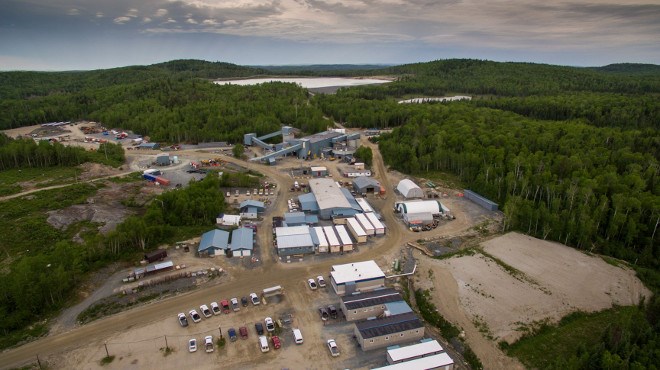Exploration means longevity to a mine’s operating life.
Alamos Gold is making substantial investments to extend the successful runs with its two underground operations in northeastern Ontario.
The Toronto gold company’s Island Gold Mine, near Dubreuilville, and the Young-Davidson Mine, outside Matachewan, show no signs of slowing down, and the exploration budget for both underground operations is being boosted this year.
Alamos released its fourth-quarter and 2023 year-end production results on Jan. 10, showing record gold production of 529,300 ounces, up 15 per cent from the prior year.
Both Young-Davidson and Island Gold reached their 2023 production goals with 185,000 ounces and 131,400 ounces, respectively.
With its mines showing good returns, low cost growth and strong cash flow, president-CEO John A. McCluskey expects “this strong performance to continue with growing production and declining costs over the next several years.”
Exploration has been the driving force behind Island Gold’s sustained high-grade gold production success ever since Alamos acquired the operation in 2017. So it comes as no surprise that the 2024 exploration budget continues to grow, up 24 per cent from last year.
“We have also increased our exploration budget to the highest level in our history, reflecting the ongoing success and significant upside we see across our asset base,” McCluskey said in a statement.
Out of Alamos’ $62-million global exploration budget for 2024, Island Gold will pocket $19 million of that total spend. Young-Davidson will receive $12 million.
Want more business news from the North? Sign up for our newsletter.
The company said the deposit at Island Gold continues to be open laterally, with gold mineralization running to the east, west and deeper down. Alamos has 41,000 metres of underground drilling on this year’s calendar to convert the gold resources at hand into the gold reserve category for the next phase of mining for several years out.
Up top, 12,500 metres of surface drilling will be queued up to probe overlooked areas, such as ore shoots and hanging wall structures closer to surface, in and around the deposit
In looking way into the future, a regional exploration program across its 55,000-hectare property has been beefed up from 7,500 metres to 10,000 metres. It’s a follow-up program to last year’s high-grade drill hits at two gold targets located four and seven kilometres from the mine.
There are also some historical mining areas to re-examine, such as the former Cline and Edwards Mines, and the Manitou property that Alamos acquired last year.
At Young-Davidson, this year’s $12-million budget is earmarked for 21,600 metres of underground exploration drilling.
The bulk of that is focused on extending mineralization where most of the mine's gold reserves and resources are situated, as well as test out certain areas of the deposit where high-grade gold had been found.
Young-Davidson has 15 years' worth of gold reserves stored up, as of the end of 2022, and has kept at least a 13-year reserve since 2011. With the deposit still open at depth and to the west, Alamos said there’s good reason to believe mining will continue there for some time to come.
There’s also an upcoming regional program across the 5,900-hectare Young-Davidson property where there will be surface drilling to investigate multiple targets near the surface.
Further out, Alamos is also spending $2 million for drilling its Golden Arrow deposit, 95 kilometres from the mill, which is being evaluated as a source of supplemental mill feed.
On the construction side, Island Gold is the scene of a major development project with a third wave of underground mine expansion.
Alamos maintains this will produce big payoffs in lowering production costs and increasing mining rates when the construction project is finished in the first half of 2026.
Once this expansion is completed, mine rates will ramp up to 2,400 tonnes per day, contributing to a 28 per cent increase in gold production. Gold production will increase to an average of 287,000 ounces beginning in 2027.
Alamos said mining costs should decrease, a reflection of the higher grades of gold they expect to tie into this year and over time, but those gains are currently being offset by inflation, “particularly labour in Northern Ontario.”
Capital spending at Island Gold this year will range between $260 million and $285 million, the headliners being the new shaft sinking, which began in December, expansion of the paste plant and mill, and a planned tailings dam lift.
With two mines in Northern Ontario and a third in Sonora State, Mexico, Alamos is considered a mid-sized Canadian gold miner. Besides a major expansion project underway at Island Gold, the company has another mine development underway at Lynn Lake in Manitoba.




